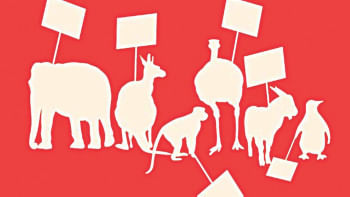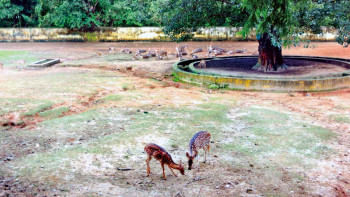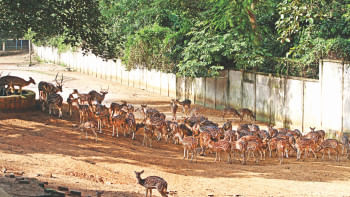Can we look beyond the seasonal activism against animal cruelty?

Over the centuries, our fellow sentient beings have played many roles: as muse for the very first human art, as spiritual deities, as captive entertainment, as aides for humans in carrying and lugging around heavy loads, as beloved companions, and as a source of livelihood. But as the relationship evolved (or devolved), so did its exploitative tendencies.
Human beings steadily climbed to the top of the food chain, and animals – even apex predators – slowly started to be relegated to the back. We have plundered, exploited, and built entire businesses on the backs of animals, domestic or wild. Even as pet-parents, many are guilty of being neglectful or preferring more expensive breeds. The breadth and range of animal abuse is wide-ranging – from damaging their habitats (hence driving them towards extinction), selective breeding to make profits and keeping them captive, to trafficking them for valuable parts, to subjecting them to casual torture and intensely cruel farming conditions.
These conversations are mostly ignored until this particular time of the year, when we engage in (or have engaged in) mass celebrations of animal sacrifice. We dissect the practice of animal sacrifice, the cruelty of the celebrations, the disconnect from the beings we are sacrificing for the greater good, and all manner of other issues. Was the sacrifice simply a show of big bucks or was it from the heart? Was the animal treated with love, and did it hurt us to say goodbye?
Is animal cruelty something we only condemn during this particular time of year? What are the subtle and not-so-subtle acts of cruelty we exhibit as we interact with/rear/raise/consume livestock/pets/wildlife?
Farmed animals make up the bulk of the protein we consume on a day-to-day basis. And yet, many of us never stop for a moment to think about the conditions these poor animals were raised in. All that broiler chicken that we consume, almost every single day for our protein needs, are subjected to some of the cruellest conditions known to an animal – from confinement right after their birth to being packed into coops without any space to roam around, and almost never getting to see or feel the sun in their lifetime, all make for an extremely cruel existence. In fact, a study by the University of Guelph that looked at more than 7,500 broiler chickens from 16 genetic strains found that the fast-growing chicken varieties that are commonly found in factory farms suffer a host of health problems that are different from the ailments caused by their horrifying living conditions alone. This means that the fast-growing variety, which is what most farms are opting for, now experience a lot of suffering even if they were provided with the ideal living conditions.
In Bangladesh, studies or articles on the overall well-being of our poultry is negligible, and most scientific articles tend to focus on the business aspect of poultry farms, or their environmental impact. No one, it seems, is really concerned whether the chicken they consumed for lunch today had access to a healthy, happy, or full life before they were butchered for consumption. While livestock in Bangladesh is still somewhat out of the clutches of large-scale factory farming, cattle farms are slowly being established across the country. While not as dark as the fate of poultry farms, cattle growing up and living their whole lives inside cattle farms are not faring much better. They don't get to graze fallow land or forage looking for the best tasting grass out there. They get mass-produced feed to make sure they fatten up nice and quick for consumption.
After introducing these horrid farming practices themselves, now the West is trying to move towards more free-range, grass-fed happy, healthy animals for consumption. But, Bangladesh always had free-range chickens that roamed around our grandparents' backyard until some important guest arrived and one of them was sacrificed. But, at least, at the very least, the poor animal didn't live all their life in abject misery.
Even for selfish reasons, we need to start looking at how our animals are being farmed and also take note of our increasing consumption. And if you concern yourself with matters of the environment, then that is all the more reason to be aware. According to a 2021 report by the United Nations Environment Programme (Unep), livestock accounts for roughly 32 percent of human-caused methane emissions. Unep recommends cutting down on dairy and meat consumption, and bringing an overall change to our farming methods.
Bangladesh doesn't have to look to the West to import good sense. We have been doing grass-fed beef and free-range chicken for decades now. The key is to scale up these good practices, and not confine and subject an animal to a host of terrible experiences before their life comes to an abrupt end, all so that some rich business person can feed his family with imported grass-fed beef in the city.
The country has the necessary legal framework to make sure animals have a good life as well. As per Section 6 (d) of Animal Welfare Act, 2019, "cruelty" amounts to restricting an animal to such an extent and in such a manner that makes the animal unable to stand, sit or function in its natural ways.
But when exactly will the country learn to translate laws into action?
Abida Rahman Chowdhury is a member of the editorial team at The Daily Star with interests in wildlife and biodiversity conservation.


 For all latest news, follow The Daily Star's Google News channel.
For all latest news, follow The Daily Star's Google News channel. 









Comments